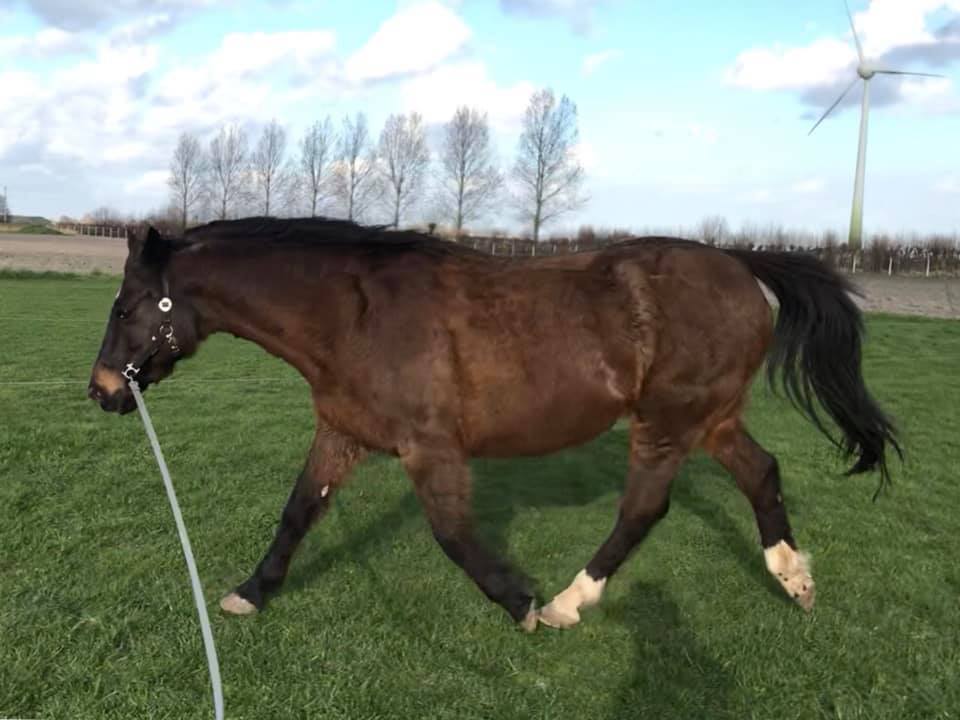SHOULD WE LEAVE WELL ENOUGH ALONE?
Nowadays horses aged upwards of 15 are unfortunately regarded as being old. At the moment our facility has a large group of horses over 20 who turn out to benefit a lot from starting a rehabilitation process in their golden years. A few years ago, I was asked if rehabilitation of older horses is useful or if it’s better to allow them to keep their compensation patterns. The worry is that if you treat an older horse, he might become lame. He has been compensating for tightness for years and he has found a way to fixate his body in a way that enables them relative comfort. If you loosen up the body of a horse like this, the lameness could become more pronounced and he ends up feeling worse than if you hadn’t treated him.
Here is what I think. A horse that has found a way to fixate his body to compensate for lameness does not show lameness clearly, but the lameness is there – just hidden. The horse becoming lame after a treatment is actually a positive thing, because at least that way you now know where to look. Even though the horse isn’t visibly lame, he is still in pain when he is fixating his body and compensating. And it’s not fair to ride such a horse.
IT’S NEVER TOO LATE
With that in mind I started a rehabilitation process with a number of horses over 20 years old. It turned out horses who are over 20 can still change a lot. Their bodies have often been restricted for a very long time and their fascia was tight which limited their mobility due to all kinds of factors. The longer the fascia has been restricted, the longer it will take to release it. This means that we need to think in smaller steps for older horses.
What came as a big surprise was that horse over 20 can build excellent muscles as soon as the body can function better again and they can learn as quickly as their younger counterparts – perhaps even faster, as they are generally more stable mentally. The training sessions must be shorter than with young horses and the training needs to be of very good quality because of this.
The fun thing about working with older horses is their wisdom. They have their own opinion and often make that very clear. You have to come up with good arguments to teach them a new movement or a different body position.

THINGS TO WATCH OUT FOR
An important point to mention in training older horses is the potential problem of metabolic disorders. Just as with humans, the effects of excessive consumption of sugar accumulate over time. Many older horses have to deal with insulin resistance or Cushing’s disease. Problems with sugar metabolism directly reflect on the fascia, so horses who are suffering from these conditions will often have less healthy connective tissue. In addition to that horses with Cushing’s have to deal with muscle breakdown. In these cases, rehabilitation can only be successful if these disorders are managed as well as possible.
MAKE THE MOST OF THE GOLDEN YEARS!
I am always so happy for the owners of the senior horses. They want to rehabilitate a horse to keep it as healthy as possible and to give them a good life for as long as possible. There are no expectations to perform in sports. These owners are happy with every small step in the right direction and, strangely enough, this is crucial in successful rehabilitation. It seems that the horses are picking up on the positive energy and as a result go beyond expectations in their training.
To sum up, horses over 20 are incredible fun to work with and with a little more time and patience they can get very far. Their tightened bodies can become much stronger than expected. I have had multiple cases where the horse was already retired, but could resume his job as a riding horse after successful rehabilitation and very much enjoyed all the attention that goes with it.
If you found this post interesting, you might also be interested in Dr Leibbrandt’s online video course – Compassionate Training For Today’s Sport Horse
Dr Leibbrandt has also written a book by the same name. Find out more at this link.



